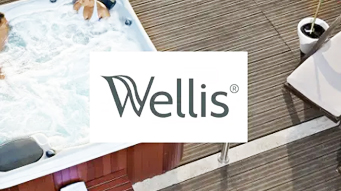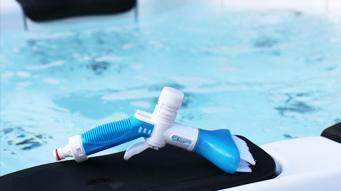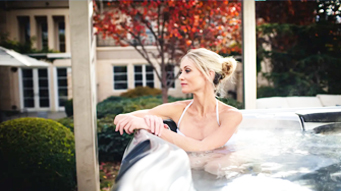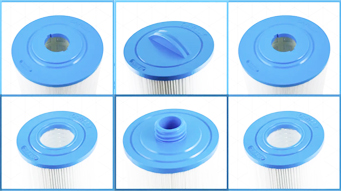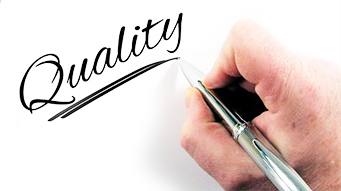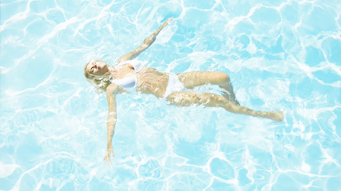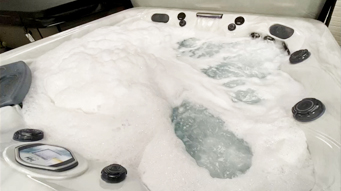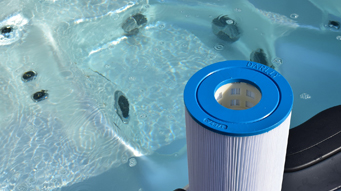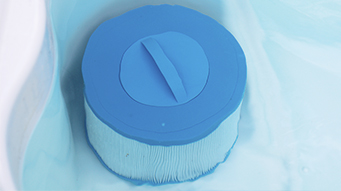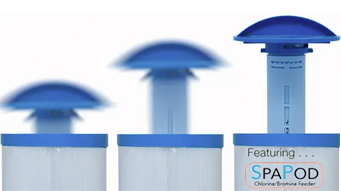Which hot tub filter fits my Wellis hot tub?
| Wellis Reference | Darlly Reference | Wellis Models |
| AKU0116 (Microban) | SC705-S | Explorer Discovery Olympus Earlier spa models: Zonza Greenland Ibiza Manhattan (before 2018) Palermo (before 2018) Malaga (before 2018) Borneo WellOne Rio1 Rio2 |
| AKU1608 | SC705 | Earth Sun Sun Family Jupiter Mercury Titan Earlyer spa models: Zonza Greenland Malaga (before 2018) Moon Rio1 Rio2 |
| AKU0135 (Coarse Thread) (Microban) | SC832-S | Danube Amazonas Rio Grande Volcano Kongo Earlier spa models: Dominika Santana Granada Pluto |
| AKU1609 (Coarse Thread) | SC860 | Wellis MyLine Mars Pluto Venus Saturn |
| AKU0136 (Fine Thread) | SC809 | AKU0136 filter cartridge is suitable for the following spas: Kilimanjaro Everest Elbrus 230 Earlier spa models: Elbrus (before 2018) Cancun Triglav Pilatus Mont Blanc Ibiza Samoa Borneo Bahama Robinson |
| AKU1831 | SC706 | AKU1831 filter cartridge is suitable for the following CityLine spas: Malaga Elbrus Marbella Manhattan Palermo |
What is the Darlly Cyclone Filter Cleaner Brush?
We all want to save a few pounds here and there don’t we? How about prolonging the life of your hot tub filters? By carefully cleaning your quality Darlly filters with the Darlly Cyclone Filter Cleaner (SC785), it is possible to extend the service life of the filters considerably.
Your hot tub should have two sets of filters, one set in the hot tub and the second set stored clean and dry ready for the next filter change.
When it is time to change the filters in your hot tub, instead of discarding the removed filters and replacing with new, have you considered cleaning the filters properly for re-use?

If you are enjoying the high-quality filtration benefits of using quality Darlly filters, your pocket can also benefit. Darlly filters are tough, durable, and can be cleaned time after time.
To clean a filter, simply add some cleaning fluid into the top of the Darlly Cyclone Filter Cleaner, connect to the garden hose (attachment included). Use the trigger to spray the water/cleaner mix into the filter using the brush to remove the unwanted debris. Once the cleaning fluid had been used up, leave the filter to stand for at least 1-2 hours (or 10 minutes with Instant Cartridge Cleaner). Then use just plain water with the brush to remove any remaining dirt. Allow the filters to dry completely before storing away in a dry place until your next filter change.
The Cyclone Filter Cleaner is compatible with all pleated spa filters except disposable filters.
Remember, quality pays, it doesn’t cost you!
What’s the difference between chlorine and bromine?
First of all, why do we actually need chorine or bromine in our spa water? Good question!
Well, like it or not, hot tubs provide the ideal conditions for bacteria to grow.
There is a source of food (from the bathers), a lovely warm temperature (30-40c) and of course, moisture. Lots of it!
Bacteria and pathogens that can grow in the water include legionella, pseudomonas aeruginosa, mycobacterium and cryptosporidium. What can we do to prevent this?
We can use chlorine and bromine to prevent this growth.
Chlorine
Chlorine is the most popular sanitiser on the market. It is an affordable and effective method of sanitising a spa.
The ideal chorine level should be around 3-5mg/l (three to five milligrams per litre)
How does chlorine work I hear you ask? When chorine is dissolved, it creates hypochlorous acid. It is this that breaks down the bacteria in the water to create a safe and sanitised environment for bathing. Once the hypochlorous acid has broken the bacteria down, it becomes deactivated. This is called combined chlorine.
Combined Chlorine
The hypochlorous acid kills bacteria and it also reacts with sweat, urea and bather contamination (ammonia). Combined chlorine can cause skin and eye irritation and is responsible for the characteristic chlorine smell in pools and spas.
How do we deal with this? How can we reduce or remove combined chlorine from the water?
Reduce: UV, ozone, regular shock dosing, users taking a pre-bathing shower to remove contaminants.
Remove: Shock dose using an oxidiser.
Bromine
Bromine is an affordable and effective method of sanitising a spa or hot tub. Many people find that bromine has less odour and is kinder to the skin than chlorine.
The ideal bromine level for a domestic setting is 3-5mg/l and in a business setting around 4-6mg/l.
Again, the voice from the back asks ‘how does bromine work?’
When bromine is dissolved in spa water, it creates hypobromous acid. It is this acid that breaks down bacteria creating a safe and sanitised environment for bathing. After breaking down the bacteria, it becomes combined bromine and it still retains a small amount of sanitising effectiveness. The by-product is Bromamines, not as problematic and Chloromines but regular shocking is required to tackle it. This cannot be reactivated but the Bromine Ions in the water can be (which is what we add when dosing the product).
Combined bromine
When the hypobromous acid reacts with any organic content it is reduced back to bromide ions. Most, but not all, of these ions can then be reactivated back to hypobromus acid by adding an oxidiser. More bromide salt or ions need to be added periodically to make up the lost ions.
Brief summary
Chlorine v. Bromine
Properties Chlorine Bromine
Disinfection Effective at killing bacteria Effective at Killing bacteria
Cost ££ ££££
Shock dosing Needs regular shock dose to Needs regular shock dose to
remove combined chlorine. regenerate bromide ions
Benefits Cheap, accessible, easy to use Kind on skin and hair
It is worth noting that a bromine sanitised spa cannot be switched over to chlorine easily if there is still bromine in the water. All of the chlorine will be going to converting bromide ions into hypobromous acid. As long as there are 15 ppm or more of bromide ions in the water, none of it will provide a chlorine residual. The spa will continue to be bromine sanitised until the bromide level falls below 15 ppm. Unfortunately, there isn’t a test kit for measuring just bromide ions in the water and so it may take many many weeks. Draining and refilling may be the reliable option here.
Where can I find the part number for my hot tub filter?
The sun is shining, the sky is blue and it’s time to replace the hot tub filters but you can’t find the old label with the filter number on it. You did actually keep the label didn’t you?
If not, read on……..
Darlly filters usually have the part number moulded on the top. If not, or it isn’t a genuine Darlly filter, you can take a few filter measurements and details.
By using the Darlly ‘Find Your Filter’ pages in the Darlly Brochure & Filter Directory accessed from the home page of our website, www.darlly.eu , it should be possible to identify your filter.
If you are not sure how or what to measure on your filter, refer to another of our helpful Filter Care topics ‘How can I identify my filter?’ for an easy step-by-step guide.
Another route to identifying your filter with the information you have is by using the ‘Filters’ dropdown on the home page. This offers a choice of options to view.
Each option will display all filters in that particular range. On the left hand side, select your hot tub brand which will then only display the filters relevant to your brand of hot tub.
By selecting a filter, the details and dimensions will be displayed along with other part numbers that the filter may also be known by.
If you still cannot identify you filter, please do not hesitate to contact us. We are very friendly and will do our best to help you
Happy Hot Tubbing!
The Darlly Team
Are all hot tub filters similar quality and equally efficient?
In a nutshell, no! Well, that was easy wasn’t it? Or was it?
Let’s have a brief look over some filters to find out a little bit more about them, what various types actually do, and what we really expect from them.
Finances can be a little tight at the moment so it can be tempting to save a little money by selecting a filter costing a little bit less. Is this a way to save money? Don’t all filters perform equally?
Let us ask ourselves what we want our filters to do for us.
The Hot Tub water always needs to crystal clear and inviting, this goes without saying and it is most desirable. What about how long the filter will continue to do this for us before it requires maintenance? What about how long the filter will last with repeated cleaning? How long before it will require replacing?
Arguably, the most important component here is the filter paper. Two similar-looking filters may differ enormously just in the filter paper alone. Briefly:-
1. The filtration quality affects the water quality.
2. The filter paper area affects how long the filter lasts between cleaning cycles. Filters of similar appearance may have up to 100% or more difference in filter paper area. The filter material pleats should also be robust enough not to ‘collapse’ or deform under pressure whilst holding filtered contaminants.
3. The quality and durability of the filter paper to withstand ripping and tearing through repeated cleaning cycles affects the lifespan of the filter.
4. The lifespan of the filter affects the running costs of the hot tub which ultimately means your pocket.
We can see from this that filters need to be robust quality items to withstand the day to day life that they are subjected to.
So far, we can see that as with most things in life, quality pays in the longer term. Purchasing a cheaper poor quality filter may not result in the saving that we thought it would be.
Something else to consider is the type of filter that we want. Have you considered a Darlly Sanistream or Darlly Silverstream filter?
Darlly Sanistream filters are designed to take a DL815 SpaPod inside. The refillable adjustable-dose pod is designed to hold chlorine or bromine tablets to continually dose the hot tub water.
Darlly Silverstream filters are impregnated using silver ion technology offering antimicrobial protection for the filter and bather. This process gives the filter a premium finish with increased filter life, a cleaner filter, no mould growth, fewer odours and fewer cleaning times.
As we can see, there are several options available when choosing replacement filters. Consider your needs and what you want your filter to do for you. Remember, the high quality filter can be the most efficient at delivering high quality water as well as being the most cost effective and sensible purchase.
If you have any suggestions for future Filter Care topics or you would like more information, please do not to get in touch. We are more than happy to help.
Happy Hot Tubbing
The Darlly Team
How do I check and maintain the water quality in my hot tub?
How do I check the water quality and how often should I test it?
How important is it to check it? Let’s just have a brief run through the elements we need to monitor and then compile a quick go-to list to simplify it.

We need to check:-
1. Sanitiser – Chlorine or Bromine. Levels should be:- Free chlorine – 3-5ppm, Bromine 4-6ppm
2. Alkalinity. This should be between 80-120ppm
3. pH level – For chlorine users, this should be around 7.2 – 7.6. For bromine users it should be around 7.0 – 7.4. Values below these ranges indicate that the water is too acidic or if above, too alkaline both of which can have a negative impact on the effectiveness of sanitiser, water quality and can damage parts of the hot tub. The water can also cause irritation to eyes. High alkalinity can also cause the water to become cloudy.
4. Total Hardness. This is a measure of the dissolved minerals in the water, usually calcium and magnesium. Ideally, this should be between 100-250ppm. If the water is too hard , scale may form and the water may be cloudy. Tap water in the south east of the UK is hard water. Soft water may draw minerals from metal parts it is in contact with and cause damage.
5. Total Dissolved Solids (TDS). Chemicals, minerals, and other soluble materials can build up over time causing dull water and reducing the effectiveness of the chemicals used to maintain water quality. Testing should take place regularly every few weeks give or take depending on hot tub usage.
6. Bacteria. Your hot tub can provide bacteria with the ideal environment to thrive and grow. Bacteria test strips can test for E.coli, Pseudomonas aeruginosa and many other coliform and non-coliform bacteria, with the results in around 15 minutes. These strips are readily available at retailers and online.
7. Visually check water clarity and foaming. Check out our Filter Care topic ‘Hot Tub foam. What the bubble is going on?’
8. Check filters. These should be checked regularly for contamination, build up of dirt, sludge and other solids. Read our Filter Care Topic ‘How to clean a hot tub filter’ for more information.
It is arguably easier and more time-efficient to test regularly and treat accordingly working to maintain high water quality rather than ignore it until it drops to an almost irrecoverable quality.
To maintain the water quality – Most important is to reduce or remove sources of contamination, i.e., organic materials, suntan lotion, fake tan, make-up, contaminated bathing wear (detergent/ softener residue), soap, shampoo, body dirt, body oils, bather load, filter maintenance, cosmetics, food and drink spilled in and around the hot tub. These all add to the filter workload and all contribute to degrading the quality of the water that you bathe in.
Don’t allow contamination to enter the water in the first place, practice strict hygiene (shower before bathing etc), and ensure hair is clean and kept clear of the water.
Poor filtration through dirty, clogged or poor quality filters can cause milky or cloudy water, unpleasant odours and sanitiser levels to drop rapidly. Biofilm can also form on fixtures, in pipework and other areas where it cannot easily be seen. Not pleasant to bathe in!
Water balance – Balancing the water in your hot tub is the number one factor to maximising the life and appearance of your hot tub and water. Correct water balance ensures that the water is not scale forming or corrosive and will enhance your bathing experience. Balanced water ensures that the sanitiser works to maximum effect helping to protect the hot tub shell, equipment, water quality and enhance your hot tub experience.
To sum up in one list:-
1. Sanitiser
2. Alkalinity
3. PH level
4. Total hardness
5. Total Dissolved Solids (TDS)
6. Bacteria
7. Clarity and Foaming
8. Filters.
Hopefully, this information will help you to enjoy a wonderful hot tub experience with enticingly clear water
If you are looking for more information or have any suggestions for other hot tub Filter Care topics, please do not hesitate to get in touch. We will do what we can to help
Happy hot tubbing!!!
The Darlly Team
What is Hot Tub Foam? What the bubble is going on?
Help! The bubbles are taking over! The foam has landed! What the bubble is going on?
Let us understand what is creating the foam, why it is appearing, where it’s coming from and what we can do about it.
For foaming to occur, three components need to be present: Water, air, and surfactants. I think we all know what water and air are, but what are surfactants?
In short, surfactants lower the surface tension between two liquids or a liquid and a solid, which makes foaming easier and more likely to happen. (The actual chemistry of surfactants is complex, so so complex. Check out Wikipedia if you really want to know! !)
We know how the water gets into the hot tub and we know that air is introduced when the jets are on, but what about the surfactants? How do they get in there? There are three main ways:-
1. Personal care products. This can be virtually anything you use on or apply to your body or bathing wear. Soap, shampoo, conditioner, deodorant, hairspray, tanning, creams and moisturisers, lotions, makeup and washing detergent. The more of these that you use, the more you take into the hot tub with you.
2. Drinks and beverages. While it may be pleasant to sip your favourite tipple whilst enjoying your soak in the hot tub, (Hey, nothing wrong with that! ) spilt beverages, alcoholic or soft drinks, can upset the water and can lead to foaming.
3. Bodies People. Oh boy. Do we carry water contaminants into the tub with us?! Body fats, oils, dead skin cells, hair and the list goes on as you can imagine.
Obviously, more bodies and more regular hot tub use results in greater contamination that can overwhelm the chemicals in the water. The result? Increased risk of foaming!
We now know what causes foaming, so what can we do about it?
How to get rid of foam from a hot tub
We have a choice now. Do you need a quick temporary fix in time for the party tonight, delaying the inevitable remedy or are you ready to spend a little more time and do the job properly now?
Short-term quick temporary fix
If you need the short-term quick fix, adding a foam remover chemical can reduce/eliminate foam almost in the blink of an eye. It is worth remembering though that this is a temporary fix and does NOT address the underlying problem with the water quality, it is merely applying a temporary plaster to the problem. If this solution doesn’t seem to work, probably because of poor water quality and lack of regular water care, the only option now is to do the job properly……
Proper job
Well, this is the one. Drain the tub and start again to remove the cause of the foaming.
1. Test the water to find out the pH, alkalinity and sanitiser levels are. Also check the TDS (Total Dissolved Solids – the surfactants) to give you an idea of what the water chemistry is when foaming occurs. This can help you to understand the problem and how to help avoid the problem occurring again.
2. Drain the hot tub. Flush through the pumps and pipework with clean water and system flush cleaner and thoroughly clean the inside of the tub. It is vitally important to ensure that all traces of cleaner are removed! Don’t forget to replace the filters with new ones or with your second set that have been thoroughly cleaned properly and left to dry previously before fitting.
3. Refill the hot tub. Test the water, add your chemicals and allow to circulate. Test the water again to check that all is satisfactory. Enjoy!
How to reduce the possibility of foaming or avoid it altogether
Before bathing, have a seriously good shower to remove as much contamination and surfactants as possible. It is much easier than draining, cleaning and refilling the hot tub!
Bathing clothes should always be washed and then rinsed in clean water to remove all traces of detergent and conditioners etc. prior to enjoying the hot tub.
Hair should be washed and rinsed prior to hot tub use, otherwise avoid hair contact with the hot tub water.
Don’t spill drinks (or food!) into the water. Use cups with lids, or better still don’t drink in there!
Maintain the water quality. Regular water maintenance is essential.
Always use quality chemicals and water treatments. Cheap products may prove to be more expensive in the long run as you may need to use more of them which can itself be detrimental to water quality leading to more regular water changes.
Now you know what causes foaming, how to clear it and how to reduce or eliminate the risk of it occurring again.
All that is left for you to do now is enjoy your hot tub! Have fun!
Happy Hot Tubbing!
The Darlly Team
What are the main benefits of buying quality filters
Filters are filters right? They all look the same so they will all filter the water and do the same job won’t they?
Some brands are a little more expensive and some brands are cheaper.
I’m trying to spend less and save the £££’s so why should I spend more money when I can get a cheaper filter?
This all sounds very attractive, and a good idea at the moment, with people tightening their financial belts, but in reality, does it make sense or is it false economy?
Generally, in life, we know that quality pays in the long run. The old adage, buy quality buy once, buy cheap buy twice applies to many products and services that we choose to invest our hard-earned cash into.
Let us take a moment to look at the filters in our hot tub, what they do for us and how they look after us whilst we are spending time relaxing and chilling out in our hot tubs. Finding out a little more about the tough life of a filter will help us to understand the benefits, efficiency, longer service life and the financial advantages of a quality filter.
Enjoyment of the hot tub experience is most definitely enhanced by clear clean water.
Dirty or contaminated water is pumped through the filter which collects any dirt and debris from the flow, the dirt is trapped within the filter and the filtered water is returned to the hot tub.
Without a quality filter, the water would soon become contaminated with contaminants from the environment (dust, leaves, insects etc) and from the hot tub users (Sunscreen, tanning products, make-up, deodorant, body oils, dirt, hair etc).
Without efficient filtration, these contaminants would soon build up to a critical level in the water. If left unaddressed, the bathing water can become cloudy and algae growth is a possibility. This can upset the balance of the water and chemical usage increases in trying to deal with the problem, which in turn hastens water saturation where the chemicals cease to be effective. As a result, the water can then become damaging to the hot tub mechanicals and/or affect the surface feel of the hot tub moulding.
High quality filters help to maintain high water quality for your enjoyment and piece of mind.
To maintain the desired high level of filtration, the filters require regular maintenance. The involves removing the existing filters and replacing with clean ones. The removed filters should be thoroughly cleaned using filter cleaning fluid. Just a quick hose down is not sufficient to clean them. The filter should be inspected to check that the filter material is not damaged, ripped or torn. If the filter material is damaged or compromised in any way, the filter should be replaced. In this condition, it will not filter the water efficiently or effectively.
An effective method to remove dirt and debris from pleated filters is to use the Darlly Cyclone Filter Cleaner (SC785) filter cartridge cleaner which easily attaches to any standard garden hose, followed by Darlly Filter Cartridge Cleaner (SC796).
The filters should be soaked overnight in a cleaning solution such as our Darlly Filter Cartridge Cleaner (SC796). Follow the simple instructions on the packaging to mix the solution. This can be mixed in a bucket and the filter(s) should then be submerged in the solution and to left to soak overnight for deep cleaning.
After removing from the solution, a thorough wash with a garden hose will complete the procedure before the filters are left to dry before use.
A thoroughly cleaned filter will provide more efficient filtration than a poorly cleaned one.
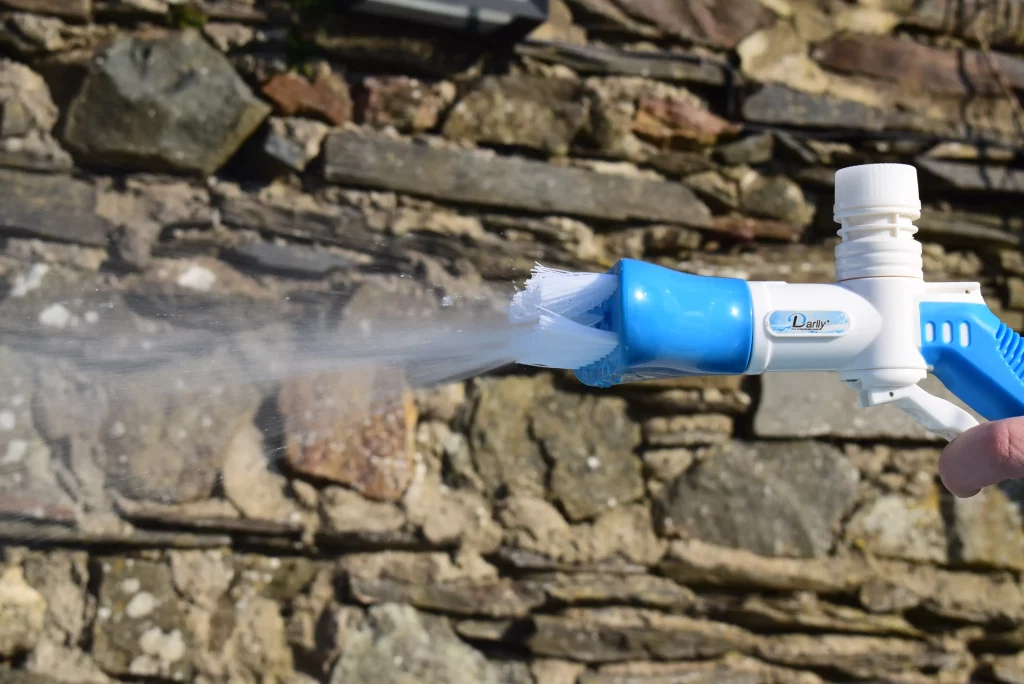
It can be advantageous to have two sets of filters to allow continued filtration and to help maintain water quality during the cleaning process.
The effectiveness of the filters can be seen by the amount of contamination trapped in the pleats of the fabric. Darlly’s high-quality robust filters are designed to withstand repeated cleaning cycles to ensure a long service life. Low cost alternatives may not trap contaminants in the same efficient manner or withstand as many cleaning cycles whilst still maintaining filter integrity and filtration efficiency required to maintain the water quality for you to enjoy.
So, back to the original question ‘Filters are filters, right?’ If your filters have a longer lifespan, you need to replace them less often. Fewer filters, fewer ££’s spent…
Higher quality filtration results in higher water quality to enjoy.
Would you want to sit in anything else?
Quality filters can work out less expensive over time with the added benefit of enjoying higher quality water.
Higher quality water usually results in fewer expensive chemical treatments too, thus saving money on chemicals.
Also remember the environmental aspect, fewer filters and chemicals is kinder to our wonderful planet. A win-win here!
In addition to the range of standard filters, Darlly also manufacture Darlly Silverstream filters in which the filter media is impregnated with silver ion particles which help to reduce bacteria both suspended in the water and also collected by the filter.
To view our range of filters click here.
If you have any suggestions for Filter Care topics that you would like us to cover, please do not hesitate to get in touch, we will see what we can do to help .
Happy Hot Tubbing!
The Darlly Team
How do I identify my Hot Tub filter?
When searching for replacement hot tub filters, if you do not have the part number of the quality Darlly filters required, use our quick-to-use comprehensive ‘Find your filter’ helper pages in our online catalogue. By using measurements and by matching the thread type pictures, you should be able to find the quality filter your hot tub deserves.
You can use the dimensions that you have to help get to the required filter. How do you measure a filter? Easy! Follow our easy-to-use guide below showing how to measure the relevant dimensions and identify the thread type, if any. All measurements are in cm.
External diameter
This is the measurement across the filter from edge to edge. This example is 12cm.

Length
Measure the length of the filter but do not include the handle or thread.

Internal / Inside diameter

Thread and fitting types
There are number of different types of fitting and thread types available. Filters can have male and female threads which can be coarse or fine, and possibly tapered.

Photo shows male threads, fine on the left hand side and coarse on the right hand side.
Measure the thread diameter. This is the outer edges of the thread for male thread. For a female thread, measure the inner diameter.
The Fine Thread (MPT) has from 6 – 8 fine twists (Pleatco ends P4 or F2M) whereas the Coarse Thread (SAE) will have as little as only 3 thicker threads (Pleatco ends P3 or F2S).

Male thread diameter measurement

Female thread diameter measurement
You now have all the dimensions that you will need to help identify your filter.
Just two more items to note now, nearly there!
What is the original colour of the actual filter fabric? If it is white, it is a normal filter.
If it is blue, it is probably a Silverstream Antibacterial filter.

The last item relates to the top of the filter. Does it have a removeable twist-and-pull lid?

If yes, this will be a Sanistream filter designed to take an in-line dosing pod such as the Darlly Sanistream DL815 SpaPod (suitable for chlorine or bromine tablets) or a Darlly DL816 AquaSPArkle Pod which is ready-filled with sufficient bromine tablets to last you up to a month.
You should now have all the information you need to identify your filter on the Darlly ‘Find your filter’ pages in the online catalogue.
All genuine Darlly filters have the part number moulded on the end cap (eg “60401”)
Also the label on the outer wrapper will have all details. (Please keep this for next time …..! )
Pleatco and Unicel will also sometimes have the part number on the end cap. Our brochure and website www.darlly.eu contain all of the part numbers to help you.
However, should you be without any part number after following the identification guide above and using our ‘Find a Filter’ guide using your measurements and brand identities, simply call us on +44 (0)1952 – 580500 we would be delighted to help you.
If you have any suggestions for hot tub / spa topics or subjects that you would like to read about in our filter care section please get in touch and we will be more than happy to help
Happy Hot Tubbing!
Inline sanitisation, Darlly Sanistream and SpaPod. What does it all mean?
Let’s start with Inline sanitization / dosing. This is a method of water treatment that takes place in the actual pumped water flow usually in the filter circuit.
It is a low maintenance method of adding chlorine or bromine to the water, usually in the form of tablets enclosed in a small pod. The pod is located inside the hot tub filter and is adjustable to allow the dosage to be tailored to the particular application.

Darlly Sanistream® filters
Darlly Europe’s revolutionary Sanistream® Direct filtration system is a new and unique technology which combines the world’s finest hot tub filters with a safe, convenient and effective sanitiser dispenser to give an integrated spa water treatment system. Sanistream® is suitable for domestic hot tubs and it also allows compliance with Section 76 of HSG282 regulations for hot tubs installed in holiday let units.
DL 815 SpaPod
The SpaPod is designed for use in Darlly Sanistream® filters. The SpaPod simply twist clicks into place on the bottom of the Darlly SaniStream filter lid. The Pod is a watertight canister pod capable of holding 5-6 chlorine or bromine tablets with a controllable flow output. The tablets should last, with normal operation, 2-3 weeks.
Easy to use, safer sanitation and cost effective. SpaPod does not come with any Chlorine or Bromine, simply add your choice when necessary.


SC800 Nature 2
Nature2 SPA is perfect for spa owners looking for an eco-friendly, low maintenance alternative to heavy chlorine or bromine to keep their spa clean and free of harmful bacteria and viruses. Nature2 SPA uses an EPA-approved mineral bed technology to effectively kill bacteria safely and effortlessly.

DL 816 AquaSPArkle Pod
For use in Darlly Sanistream® filters, the AquSPArkle Bromine Pod (Chlorine Pod following shortly) is a larger version of the SpaPod but comes ready filled with enough Bromine Tablets to last you up to a month.
(Available in packs of 3)
There are three possible ways to use the AquaSPArkle pod:-
a) Use in a built-in propriety hot tub dosing system or frame.
b) Use with a Darlly Sanistream open-top filter or open-top filters fitted with a centre support to retain the pod.
c) Use with a Darlly Sanistream handle-top filter that allows the pod to easily twist and click into place.
It takes a while for the bromine tablets to begin to dissolve so it may be appropriate to first shock treat to immediately establish chlorine and bromine residuals. Add the appropriate amount of shock treatment as per the product label dosing instructions. Always test your hot tub water prior to use and maintain bromine levels between 4 to 6 mg/l.

